clockwork universe
description: a concept from classical physics describing a deterministic, mechanistic universe that runs like clockwork, based on laws discoverable by humans.
37 results
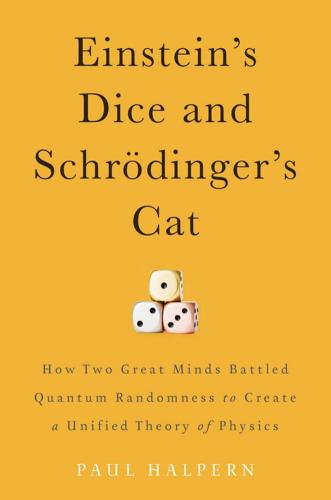
Einstein's Dice and Schrödinger's Cat: How Two Great Minds Battled Quantum Randomness to Create a Unified Theory of Physics
by
Paul Halpern
Published 13 Apr 2015
However naive my attempt at this may be, I do have to value it higher than scrutinizing Nature for the purpose of inventing a device to . . . say, avoid splashing my spectacles in eating a grapefruit, or other very handy conveniences of life. —Erwin Schrödinger, “The New Field Theory” Contents Acknowledgments ix introduction Allies and Adversaries 1 chapter one The Clockwork Universe chapter two The Crucible of Gravity 13 43 chapter three Matter Waves and Quantum Jumps chapter four The Quest for Unification 109 chapter five Spooky Connections and Zombie Cats chapter six Luck of the Irish 159 chapter seven Physics by Public Relations chapter eight The Last Waltz: Einstein’s and Schrödinger’s Final Years 203 conclusion Beyond Einstein and Schrödinger: The Ongoing Search for Unity 223 Further Reading Notes 241 Index 255 237 vii 75 183 127 Acknowledgments I would like to acknowledge the outstanding support of my family, friends, and colleagues in helping me see this project to completion.
…
They squandered the prospect of spending their remaining years in friendly dialogue, headily discussing possible clockwork mechanisms of the universe. Having waited billions of years for a complete explanation of its workings, the cosmos would be patient, but two great thinkers had lost their fleeting opportunity. 12 CHAPTER ONE The Clockwork Universe These transient facts, These fugitive impressions. Must be transformed by mental acts, To permanent possessions. Then summon up your grasp of mind, Your fancy scientific, Till sights and sounds with thought combined Become of truth prolific. —James Clerk Maxwell, from “To the Chief Musician upon Nabla: A Tyndallic Ode” U ntil the age of relativity and quantum mechanics, the two greatest unifiers of physics were Isaac Newton and James Clerk Maxwell.
…
Through his pairing of electricity and magnetism, Maxwell pioneered the notion of unification of the forces. Today we know that the four fundamental forces of nature are gravitation, electromagnetism, and the strong and weak nuclear interactions. We believe that all other forces (friction, for instance) are derived from that quartet. Each of the four operates at a different 14 The Clockwork Universe scale and possesses a different strength. Gravitation, the weakest force, draws massive bodies together over wide distances. Electromagnetism is far, far stronger and affects charged objects. Although it operates at similarly long range, its effect is reduced by the fact that almost everything in space is electrically neutral.
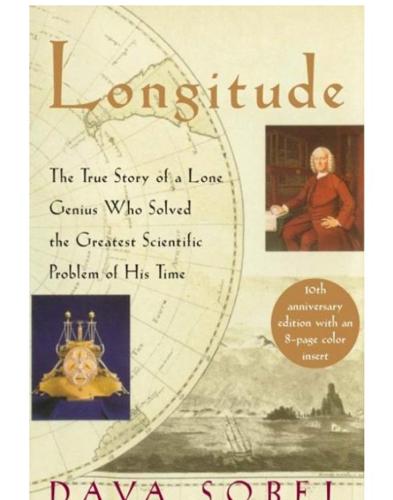
Longitude
by
Dava Sobel
Published 1 Jan 1995
LONGITUDE The True Story of a Lone Genius Who Solved the Greatest Scientific Problem of His Time DAVA SOBEL Contents 1. Imaginary Lines 2. The Sea Before Time 3. Adrift in a Clockwork Universe 4. Time in a Bottle 5. Powder of Sympathy 6. The Prize 7. Cogmaker’s Journal 8. The Grasshopper Goes to Sea 9. Hands on Heaven’s Clock 10. The Diamond Timekeeper 11. Trial by Fire and Water 12. A Tale of Two Portraits 13. The Second Voyage of Captain James Cook 14. The Mass Production of Genius 15. In the Meridian Courtyard Acknowledgments Sources For my mother, Betty Gruber Sobel, a four-star navigator who can sail by the heavens but always drives by way of Canarsie. 1.
…
Seafaring men such as Captain William Bligh of the Bounty and the great circumnavigator Captain James Cook, who made three long voyages of exploration and experimentation before his violent death in Hawaii, took the more promising methods to sea to test their accuracy and practicability. Renowned astronomers approached the longitude challenge by appealing to the clockwork universe: Galileo Galilei, Jean Dominique Cassini, Christiaan Huygens, Sir Isaac Newton, and Edmond Halley, of comet fame, all entreated the moon and stars for help. Palatial observatories were founded at Paris, London, and Berlin for the express purpose of determining longitude by the heavens. Meanwhile, lesser minds devised schemes that depended on the yelps of wounded dogs, or the cannon blasts of signal ships strategically anchored—somehow—on the open ocean.
…
Although he was an able navigator who could keep his ship at her proper depth and protect his crew from mass drowning, his delays had given scurvy the upper hand. Anson helped carry the hammocks of sick sailors ashore, then watched helplessly as the scourge picked off his men one by one . . . by one by one, until more than half of the original five hundred were dead and gone. 3. Adrift in a Clockwork Universe One night I dreamed I was locked in my Father’s watch With Ptolemy and twenty-one ruby stars Mounted on spheres and the Primum Mobile And the notched spheres eating each other’s rinds To the last tooth of time, and the case closed. —JOHN CIARDI, “My Father Watch” As Admiral Shovell and Commodore Anson showed, even the best sailors lost their bearings once they lost sight of land, for the sea offered no useful clue about longitude.
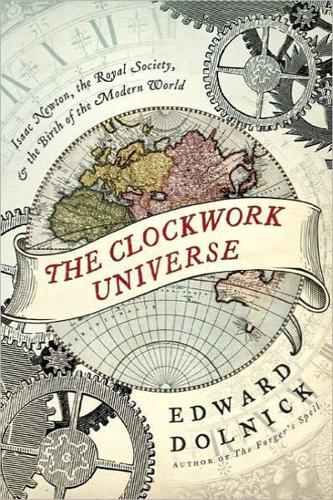
The Clockwork Universe: Saac Newto, Royal Society, and the Birth of the Modern WorldI
by
Edward Dolnick
Published 8 Feb 2011
The Clockwork Universe Isaac Newton, the Royal Society, and the Birth of the Modern World EDWARD DOLNICK For Lynn The universe is but a watch on a larger scale. —BERNARD DE FONTENELLE, 1686 Contents Cover Title Page Epigraph Chronology Preface Part One: Chaos Chapter One - London, 1660 Chapter Two - Satan’s Claws Chapter Three - The End of the World Chapter Four - “When Spotted Death Ran Arm’d Through Every Street” Chapter Five - Melancholy Streets Chapter Six - Fire Chapter Seven - God at His Drawing Table Chapter Eight - The Idea That Unlocked the World Chapter Nine - Euclid and Unicorns Chapter Ten - The Boys’ Club Chapter Eleven - To the Barricades!
…
There was nothing inherent in the nature of rocks that caused them to fall; they fell because God made them fall. If you stopped to think about it, wrote Whiston, it was as miraculous for a stone to drop to the ground as it would be for it to hover in midair. Leibniz pounced. Newton had committed heresy. Both Leibniz and Newton believed in a clockwork universe, but now Leibniz invoked the familiar image to mock his old enemy. “Sir Isaac Newton, and his followers, have also a very odd opinion concerning the work of God. According to their doctrine, God Almighty wants to wind up his watch from time to time: otherwise it would cease to move. He had not, it seems, sufficient foresight to make it a perpetual motion.”
…
The Constitution was akin to a scientific theory, and the amendments played the role of experiments that helped define and test that theory. Newton’s posthumous influence was overwhelming, but in one respect his triumph proved too complete. Newton would have wept with rage to know that his scientific descendants spent their lifetimes proving conclusively that the clockwork universe ran even more smoothly than he had ever believed. It ran so marvelously well, in fact, that a new consensus quickly arose—just as Newton’s enemies had claimed, Newton had built a universe that had no place within it for God. The crowning glory of eighteenth-century astronomy was the proof, by the French mathematician Pierre Simon Laplace, that although the planets did wobble a bit as they circled the sun, those wobbles stayed within a narrow, predictable range.
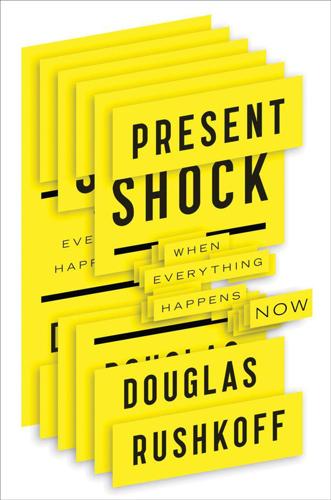
Present Shock: When Everything Happens Now
by
Douglas Rushkoff
Published 21 Mar 2013
Directing the motion of trains with red lights and green lights was eventually applied to cars and ultimately to people navigating the crosswalks—all timed to maximize efficiency, productivity, and speed. In the clockwork universe, all human activity—from shift work to lunch breaks to TV viewing to blind dates—involved getting bodies to the right place at the right time, in accordance with the motions of the clock. We were as clocks ourselves, with arms that moved and hearts that counted and alarms that warned us and bells that went off in our heads. Just wind me up in the morning. If the clockwork universe equated the human body with the mechanics of the clock, the digital universe now equates human consciousness with the processing of the computer.
…
Ironically, perhaps, an invention designed to affirm the primacy and ubiquity of the sacred ended up becoming a tool for the expansion of the secular economy. Trade had been expanding for a century or two already, and keeping track of things numerically—as well as temporally—had become much more important. If the previous era was characterized by the calendar, this new clockwork universe would be characterized by the schedule. The bells of the monastery became the bells of the new urban society. Trade, work, meals, and the market were all punctuated by the ringing of bells. In line with other highly centralizing Renaissance inventions such as currency and the corporation, bells were controlled by central authorities.
…
The emergence of the clock tower gave everyone access to the same time, allowing for verification while also amplifying time’s authority. Thanks to the clock tower, the rhythms of daily life were now dictated by a machine. Over time, people conformed to ever more precisely scheduled routines. Where the priority of the calendar-driven civilization was God, the priorities of the clockwork universe would be speed and efficiency. Where calendars led people to think in terms of history, clocks led people to think in terms of productivity. Time was money. Only after the proliferation of the clock did the word “speed” (spelled spede) enter the English vocabulary, or did “punctual”—which used to refer to a stickler for details—come to mean a person who arrived on time.8 The metaphor for the human being became the clock, with the heartbeat emulating the ticks of the escapement, counting off the seconds passing.
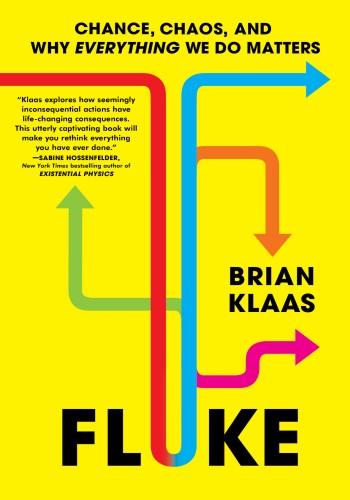
Fluke: Chance, Chaos, and Why Everything We Do Matters
by
Brian Klaas
Published 23 Jan 2024
Other scientists and philosophers reject the clockwork world of Laplace’s demon. It’s not that we lack understanding or the right tools to measure a clockwork universe, they argue, but rather that the mysteries of the universe are unknowable. Our lives could be different. The future will always be enigmatic, no matter the technology, no matter the omniscient demons we can imagine. It’s not that we don’t know. It’s that we can’t know. So, which is it? Do we live in a clockwork universe, or an uncertain one? Sixty years ago, a man named Edward Norton Lorenz brought us closer to the answer. Since his childhood, Lorenz had taken an interest in the weather.
…
When he plugged those slightly truncated values from the printouts back into the simulation, he was always off by a tiny amount (in this case, just 0.000127 miles per hour). Such seemingly meaningless alterations, such tiny rounding errors, were producing major changes. That led Lorenz to a realization that cracked the foundations of how we understand the world. Even in a clockwork universe with controlled conditions, minuscule changes can make an enormous difference. Just by raising the temperature one-millionth of a degree or lowering atmospheric pressure by a trillionth of a bar, the weather two months later could morph from a clear blue sky into a torrential downpour, even a hurricane.
…
Sherlock Holmes once quipped, “It has long been an axiom of mine that the little things are infinitely the most important.” Chaos theory proved Holmes right. Because small changes can make such a big difference, the universe will always appear uncertain, even random, to us. No matter the technological leaps we make, humans will never become Laplace’s demon. If there is a clockwork universe ticking away behind everything we see and experience, we will never fully understand it. Chaos theory meant that even those predictable billiard balls had to be reclassified as unpredictable. Even the slightly different pull created by the gravitational mass of human bodies standing near a billiard table would make the movement of a ball impossible to predict after it bounced off other balls six or seven times, which is why even a perfect bank shot can’t be planned beyond a few collisions.
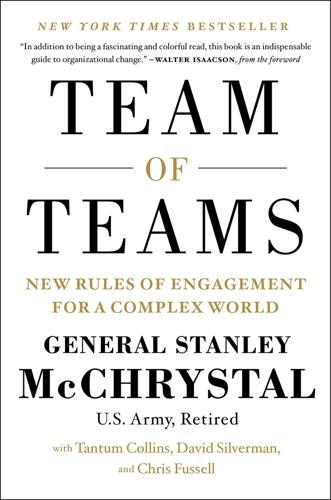
Team of Teams: New Rules of Engagement for a Complex World
by
General Stanley McChrystal
,
Tantum Collins
,
David Silverman
and
Chris Fussell
Published 11 May 2015
Science at the time was dominated by the notion of determinism—the idea that any initial conditions has only one, inevitable outcome: a ball thrown at a certain speed will have a predictable trajectory, as will a planet in orbit. Throughout the nineteenth century, phenomena that had once been written off as the work of God fell under human mastery. The vision was of a “clockwork universe” in which all laws were coherent and all causes and effects predictable. If you knew the rules and the inputs, you could foresee and sometimes manipulate the outputs. The challenge was taking the clockwork apart to see how it all fit together. Taylor created a clockwork factory, systematically eliminating variation, studying all labor until he understood it inside and out, honing it to peak efficiency, and ensuring that those precise procedures were followed at scale.
…
Such unpredictability has happened not in spite of technological progress, but because of it. The technological developments of recent decades are of a fundamentally different variety from those of Taylor’s era. While we might think that our increased ability to track, measure, and communicate with people like Tarek would improve our precise “clockwork universe” management, the reality is the opposite: these changes produce a radically different climate—one of unpredictable complexity—that stymies organizations based on Taylorist efficiency. It is because of these changes that the Task Force’s “awesome machine,” excellent by all twentieth-century metrics, was failing.
…
The computer’s memory stored six decimal places for any value, but Lorenz had entered the reproduced sequence from the printout, which displayed only three. He did not foresee a problem in entering the printout’s rounded-off numbers, assuming that the difference between .506127 and .506 would be inconsequential. In a clockwork universe it would have been inconsequential. The calculations that had successfully predicted eclipses, tides, and comets behave in straightforward ways; a small error in input data would lead to a small error in prediction—forecasting an eclipse a few minutes early or late. But weather is different.
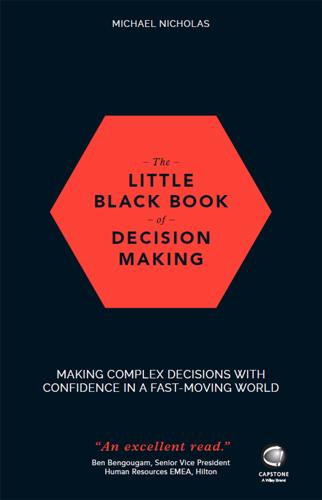
The Little Black Book of Decision Making
by
Michael Nicholas
Published 21 Jun 2017
Over a period of only 100 years or so, scientific theorems emerged that started to explain why things happen the way they do and, gradually, mathematical laws were developed that revealed that there was some order and predictability. Now, scientists saw the universe as being like a machine, made up of separate parts that behaved in foreseeable ways, making it possible to replace the unfathomable “why?”, with a meaningful answer to “how?” The belief in a “clockwork universe” was born, certainty and precision became the new guiding principles, and the standard approach to decision making was radically revised – to one based on predictability. As scientific thinking became more widespread, it was inevitable that someone would apply it to business, and that person was Frederick Winslow Taylor, an American inventor who is credited by many management theorists today as being the father of modern business management principles.
…
Today, there doesn't seem to be much doubt that many of our habitual thought patterns are implanted in childhood; in fact, studies have found that babies are already making assumptions about the world by the time they are old enough to be tested. This process doesn't stop in childhood, however, and new beliefs can continue to emerge at any stage of life, either individually or within society as a whole. In the context of this book, the combination of the deterministic science of the clockwork universe, together with Fredrick Winslow Taylor's scientific management, has shaped our beliefs about what constitutes high-quality decision making to an extraordinary degree. It might be anticipated that this type of rational thinking would have provided the tools to minimise the impact of conditioning, as well as its implicit limiting assumptions.
…
In 2007, economists used 45,000 economic data series to estimate the likelihood of an impending economic meltdown. Their estimate of whether we would experience one as severe as that which actually occurred was less than one chance in 500, yet happen it did, and only one month later. Science may still want to simplify everything into the simplistic model of the clockwork universe, but systems like these are just too complex to be tamed by analysis. At one level, I think we know this. For example, in snooker, when the best snooker players in the world break off, even though they would love to do the perfect shot, no one is surprised that the balls finish differently each time, because we know that tiny variations in starting set-up or cue ball direction will become magnified to create huge differences by the time the balls come to rest.
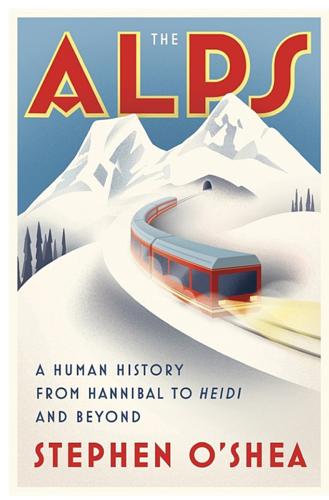
The Alps: A Human History From Hannibal to Heidi and Beyond
by
Stephen O'Shea
Published 21 Feb 2017
Already in the 1680s, an English cleric named Thomas Burnet had posited that the Alps had been formed after the seven days of Creation, thereby explaining the mysterious absence of mountains in Genesis. Burnet’s Sacred Theory of the Earth caused an unholy stir among the learned classes. Isaac Newton, whose Principia on physics (published in the same decade as Burnet’s work) would lead Deists to believe in a clockwork universe, fashioned by God then left alone to keep ticking, felt moved to write a lengthy letter to Burnet and suggest that each “day” of Creation could, in fact, encompass a much, much longer period of time than is customarily understood by that word. Throughout the eighteenth century, biblical literalism wobbled on its pedestal.
…
Shortly before ten in the morning on 1 November, All Saints’ Day, 1755, the great city of Lisbon was flattened by a tremendous earthquake and then swamped by a tsunami. Aftershocks were felt as far away as Britain and Ireland, and the coast of Brazil was buffeted by great waves. But the true tremors of the devastating quake affected a view of the world. Was the clockwork universe a time bomb? Or, if God took an interest in the doings of man, then He surely was possessed of a most ungodly temperament, devastating and destroying all of Catholic Lisbon’s churches, witnesses to the greatness of His glory. Worse yet, the Alfama, Lisbon’s prostitution district, emerged unscathed.
…
Abélard, Pierre, 16 Achen Pass, 188 Adelaide, the Girl from the Alps, 156 Aeneid (Virgil), 76–77 aerial tramways on the Aiguille, 37–38, 41, 42–43 disasters, 42 history, 41–42 Aiguille du Midi (Needle of the South) aerial tramways, 37–38, 41, 42–43 altitude, 37 Espace Vertical, 43 Le Pas dans le Vide (Step into the Void), 44–45 Plan de l’Aiguille, 38, 41 Aime, France, 60 Alba di Canazei, Italy, 252 Albertville, France, 55–57, 74, 87, 91n, 94 Aletsch Glacier, 124, 125–27, 173 Alighieri, Dante, 72 Allues Valley, 59 Alpe d’Huez, 65 alpenglow, 255 alpenrose bush, 82 alphorns, 153–54 Alpine buttercup, 82 Alpine Club, 40, 43, 119 Alpine plants, 81–83 Alt, Salome, 212 Altaussee, Austria, 223, 226–27, 270 Altdorf, Switzerland, 132 altitude sickness, 46, 203 Alto Adige, Italy (South Tyrol or Südtirol), 243–44, 262, 264–65, 275 American Psycho (Ellis), 42 Andermatt, Switzerland, 132–33 Andrews, Julie, 204, 212, 229 anguane, 254 Anselm of Aosta (Anselm of Canterbury), 99 Aosta, Italy, 98–100 Aosta Valley cretinism (congenital iodine deficiency syndrome), 98, 120 dahu legend, 29–30, 96 effects of development, 97–98 Fort Bard, 96–97, 108 mountains surrounding, 95–96, 97 Aperschnalzen, or competitive whipcracking, 199 Appalachian Mountains, 139 Appenzell Alps, 146, 149, 152–53, 225 Appian of Alexandria, 74 Arnoldstein, Austria, 280 Ascent of Mont Blanc (Smith), 39 Astrolabe, 16 Attersee, 228, 229 Augustus (emperor), 86, 98, 109 avalanche galleries, 61, 105–6, 116, 237, 277 Avengers: Age of Ultron (movie), 97 Avoriaz, 26, 103 Back to the Front: An Accidental Historian Walks the Trenches of World War One (O’Shea), 288 Bad Aussee, Austria, 223 Bad Ischl, Austria, 215–22, 230 Bad Wiessee, Germany, 188–90, 192, 208, 221 Balmat, Jacques, 35–36, 37, 238 Basin and Range (McPhee), 139 Battle of Solferino, 79 Bavarian Alps, 193–94 Bayrischzell, Germany, 194 Beaujolais, France, 3 Bell, Vanessa, 40n Belleville Valley, 59 Bellinzona, Switzerland, 136–39 Berchtesgaden, Germany, 193, 199–201 Bergfilm (mountain film), 168, 187, 188, 192, 204 Bernau, Germany, 197 Bernese Alps, 128, 264 Bernese Oberland, 157, 165, 167 biblical literalism, 9 Biel, Switzerland, 128 Blatter, Sepp, 116 Blessed Virgin sightings, 27 Bobbio Abbey, 147 Bollywood Restaurant, 173–74 Bolzano, Italy (Bozen), 243, 244–47 Bonatti, Walter, 170 Bond, James, 28, 46, 130, 256, 263–64 Bormann, Martin, 201, 202, 207 Bourg-Saint-Maurice, France, 61, 74 Bourrit, Marc-Théodore, 35–36 Bovec, Slovenia, 281 Bozen, Italy (Bolzano), 243, 244–47 Brahms, Johannes, 215 Braun, Eva, 203, 204 Brenner Pass, 70, 259–60 Bressanone, Italy (Brixen), 260 Brig, Switzerland, 123 Brindisi, Italy, 84 Brixen, Italy (Bressanone), 260 Bruckner, Anton, 215 bullet train, 85 Burgundy, France, 3, 18, 106 Burj Khalifa, 45 Burke, Edmund, 17–18 Burnet, Thomas, 8–9 Burton, Richard, 292 Buzzati, Dino, 96–97, 256 Byron, Lord, 19–20, 190 Cadorna, Luigi, 284–86, 287 Caffè San Marco, 293–94 Caffè Symphony, 252 Canada, bilingualism, 115 Canal Grande, 294 Candide (Voltaire), 10, 197 cantons of Switzerland, 132n Caporetto, Slovenia (Kobarid), 245, 284, 285, 286–87, 288–89 Carinthia, Austria, 197, 234, 274 Carnic Alps, 275–76, 279, 290 Carthage, 74, 76, 77 Casanova, Giacomo, 292 Castello del Buonconsiglio, 242–43, 245, 266 Castel Roncolo, 245–46 Le Catogne, 107 Cato the Elder, 77 Cauchy, Emmanuel, 46 Centrones, 75–76 Chablis, France, 3 Chalandmarz (First Day of March), 268 Chamberlain, Neville, 200 chamois, 29, 35, 36, 219, 221, 246 Chamonix, France cog railway, 46, 47, 49–50, 84 Edward Whymper burial in, 120 foreigners in, 38, 39 medevac helicopter, 46 Mer de Glace (Sea of Ice) glacier, 47–48, 84, 125, 257 pollution, 49, 135 tourist attractions, 44 Winter Olympics in 1924, 55 Chaplin, Charlie, 114 Charlemagne, 78, 108, 204, 266 Charles Albert or Carlo Alberto (king), 57, 91n cheese-producing meadows (alps or alpages), 31–32 Chiemgau, Germany, 197 Chillon Castle, 18–19 Chinese Hallstatt, 214–15 Church of Maria Locherboden, 180 Church of the Scourged Savior, 184 cicerone, 6–7 Cima Grande di Lavaredo, 45, 167, 257, 258 Cinque Torre (Five Towers), 254 Cinuos-chel, Switzerland, 267 Cividale del Friuli, Italy, 279 Clarens, Switzerland, 16, 17 Claude, at Orsières, 107–9 Claude Glass, 15, 17, 45 Clemens, Samuel Langhorne (Mark Twain), 82, 83, 129, 217 climate change, 47–48 clockwork universe, 9 Cluses, France, 33, 34 Cocteau, Jean, 54 cog railways Chamonix, 46, 47, 49–50, 84 the Eiger, 166, 172, 174–75 Täsch, 117–18 Colombanus, 147 Conan Doyle, Arthur, 160–61, 163, 164–65, 199 Confessions of Zeno (Svevo), 292 Confessions (Rousseau), 93 Conquistadors of the Useless: From the Alps to Annapurna and Beyond (Terray), 170 Constantine (emperor), 77–78 Cook, Thomas, 39 Cook tourists, 39–41 Coppet, Switzerland, 11 Coppi, Fausto, 253 Le Corbusier, 248 Corinne (Staël), 11 Cortina d’Ampezzo, Italy, 55, 254, 256, 257 Cottian Alps, 86–87 Cottius, Marcus Julius, 86 Council of Trent, 241–42, 254 Counter-Reformation, 242 Craig, Daniel, 264 cretinism (congenital iodine deficiency syndrome), 98, 120 crétins des Alpes, 7, 29, 98, 120 Croz, Michel, 119 Cruise, Tom, 242 Cursed Mount (Mont Maudit), 37, 61 cursed thistle, 82 Dachstein Mountains, 213 dahu, 29–30, 40, 51, 96 Daisy Miller (James), 19 The Damned (Visconti), 192–93, 229 d’Angeville, Henriette, 37 d’Annunzio, Gabriele, 277 Dante (Dante Alighieri), 72 Danubio (Magris), 293 Darbellay, Michel, 107, 166 d’Argenteuil, Héloïse, 16 Daudet, Alphonse, 129 da Vinci, Leonardo, 46 Davos, Switzerland, 160, 268 Deauville, France, 54n décolletage, 33–34 Il deserto dei Tartari (The Tartar Steppe) (Buzzati), 96–97, 256 detours, 32–33, 51, 53, 195–96 Deutsche Alpenstrasse, 183, 193, 195, 197 Devil’s Bridge (Teufelsbrücke), 134, 135 Divina Commedia (Dante), 72 Docteur Vertical, 46 Dokumentationszentrum Obersalzberg, 205–8 Dolasilla, 256 Dolomieu, Déodat de, 249 Dolomites about, 243, 248–49, 251–52 Alba di Canazei, Italy, 252 alpenglow, 255 anguane, 254 Bolzano, Italy (Bozen), 243, 244–47 Bressanone, Italy (Brixen), 260 Caffè Symphony, 252 Cinque Torre (Five Towers), 254 Cortina d’Ampezzo, Italy, 55, 254, 256, 257 Dreisprachenspitze (The Peak of Three Languages), 264–65 Eisack Valley, 260 Fanes, 256 the Iceman (Ötzi), 246–48, 259, 261 Ladin language, 249–50 Lago Bai de Dones, 254 Laurin (dwarf king), 255 legends and folklore, 254–56, 263–64, 273 Marmolada, 253–54, 276 Merano, Italy, 260, 261–62 moon princess and, 255 Passeier Valley, 261 Pordoi Pass, 252–53 Puster Valley, 259 Rifugio Lavaredo, 258 Rosengarten, 255 Runkelstein Castle, 245–46 San Leonardo, Italy, 261 Schlanders, Italy, 262 Sella Pass, 251–52 Selva di Val Gardena, Italy (Wolkenstein), 243 Stelvio Pass, 263–67 Trafoi, Italy, 263 Tre Cime (Three Peaks) di Lavaredo, 257–59, 276 Urtijëi, Italy (Ortisei, St.
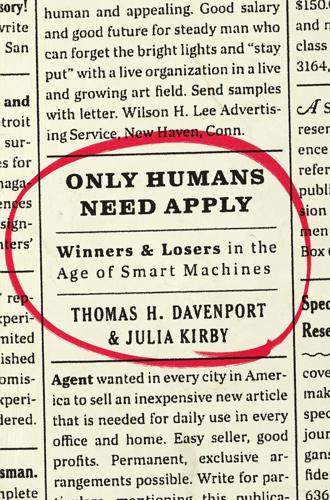
Only Humans Need Apply: Winners and Losers in the Age of Smart Machines
by
Thomas H. Davenport
and
Julia Kirby
Published 23 May 2016
And they delight in solving the hardest puzzles, and attaining the top ranks of performance, in their chosen fields. You may choose to step narrowly if you dream of that special joy of knowing, however briefly, something that no one else knows or has ever known. Science writer Edward Dolnick, in The Clockwork Universe, recounts an anecdote about the scientist Fritz Houtermans, who wrote a pioneering paper in 1929 on how the sun’s energy was produced by fusion: “The night he finished the work, he and his girlfriend went for a stroll. She commented on how beautiful the stars were. Houtermans puffed out his chest.
…
McKinsey Global Institute, “Disruptive Technologies: Advances That Will Transform Life, Business, and the Global Economy,” May 2013, file:///C:/Users/jkirby/Downloads/MGI_Disruptive_technologies_Full_report_May2013%20(2).pdf. 8. Syd Field, Four Screenplays: Studies in the American Screenplay (New York: Delta, 1994). 9. Edward Dolnick, The Clockwork Universe: Isaac Newton, the Royal Society, and the Birth of the Modern World (New York: Harper Perennial, 2012). 10. Greg Farrell and Andrew Martin, “How Goldman Banker Became NFL’s Go-To Stadium-Finance Guy,” BloombergBusiness, January 29, 2015, http://www.bloomberg.com/news/articles/2015-01-29/how-goldman-banker-became-nfl-s-go-to-stadium-finance-guy.
…
See also cognitive technologies; computers “AI winter,” 36 Apollo flights and, 67 Asimov’s three laws for, 244 augmentation of soft skills and, 123 automating administrative tasks and, 216 broadening the base of methods, 194 cancer cure and, 60–61 consequences of, 243–46, 249–50 cost to build, 155 in education, 230 endowing with emotions, 246 expert systems, 37 fighter pilots and, 66 human attributes, 124–27, 245 human control of, 244–45 investing by, 92–93 move from “narrow” to “general,” 35 programmers, 178 regulatory oversight of, 246–49 researchers and, 181 Ruby programming language, 222 self-awareness and AI spring, 54–57 social memory, 123 society-level decisions about, 226–28 term use and branches of, 37–38 Thiel on, 243 universe model and KIGEN, 59 warnings and predictions about, 225–26 Warren, 20 (see also IBM Watson) artists, 24, 119, 238 Asimov, Isaac, 244 Associated Press (AP) automated journalism, 96–98, 103, 104, 121, 222 investing in automated publishing, 97 Atlas, David, 121 Auerbach, Red, 116–17 Auerswald, Phil, 128 augmentation, 31–32, 59–88, 201–24, 234 “automation leader” for, 221–23 automation vs., 61–63, 128–29, 204–8, 223–24 cutting both ways, 70–74 defined, 64–65 example, spreadsheets, 69–70 example, underwriting, 77–84, 218–19 five options for, 76–77, 218 forms of, 65–69, 209 as goal, 228–29 in governance, 249–51 government policies and, 229–43 human-machine partnership, 68, 203, 234, 235, 237, 239, 250, 251 implementing, steps for, 208–23 key capabilities of humans and, 71–73 less work not likely with, 69–70 “moon shots,” 210, 215–16 as organizational priority, 203–4 preparing employees for, 219 proofs of concept or pilots, 220–21 reasons for augmentation, 204–8 smart machines and job security, 59–61 Stepping Aside, 77, 81, 85, 87, 108–30 Stepping Forward, 77, 83–86, 88, 176–200 Stepping In, 77, 81–82, 85, 87, 131–52 Stepping Narrowly, 77, 82, 85, 87–88, 153–75 Stepping Up, 76–77, 80, 84–86, 89–107 three forms, for specialization, 166–69 as wheels for the mind, 63–65 Augmentation Research Center, 64 “Augmenting Human Intellect” (Engelbart), 64 Automated Insights, 22, 97 Wordsmith, 96 automation, 1, 3–4, 5, 6, 8, 12–13 augmentation vs., 61–63, 128–29, 204–8, 223–24 business process management, 40 codified tasks and, 12–13, 14, 27–28, 30 content transmission and, 19–20 eras of, 2–5 government policies and, 229–43 income inequality and, 228–29 “isolation syndrome,” 24 job losses and, 1–6, 8, 30, 78, 150–51, 167, 223–24, 226, 227, 238 jobs resistant to, 153–75 process automation, 48–49 “race against the machine,” 8, 29 reductions in cost and time, 48, 49 regulated sectors and legal constraints on, 213–15 repetitive task, 42, 47–48, 49, 50 robotic process, 48–49, 187, 221, 222–23 “rule engines,” 47 sectors using, 1, 11–12, 13, 18, 74, 201–3 (see also specific industries) signs of coming automation, 19–22 Stepping Forward with, 176–200 Stepping In with, 134–52 Stepping Up and, 91–95 strategy of, as self-defeating, 204–8 strongest evidence of job threat, 19 Automation Anywhere, 48, 216 automotive sector, 1 Autor, David, 70–71 Balaporia, Zahir, 189–91 Bankrate.com, 96 Bathgate, Alastair, 156, 157 Baylor College of Medicine, 212 Beaudry, Paul, 6, 24 Belmont, Chris, 209 Berg company, 60–61 Berlin, Isaiah, 171 Bernanke, Ben, 28, 42, 73 Bernaski, Michael, 79, 80, 81, 82, 187 Bessen, James, 133, 233 Betterment, 86–87, 198 big-picture perspective, 71, 75, 76–77, 84, 91, 92, 99, 100, 155 Stepping Up and, 98–100 Binsted, Kim, 125 “black box,” 95, 134, 139, 148, 192, 198 Blanke, Jennifer, 7 Blue Prism, 49, 156, 216, 221 Bohrer, Abram, 159 Bostrom, Nick, 226, 227 Brackett, Glenn, 128 Braverman, Harry, 15–16 Breaking Bad (TV show), 172 Brem, Rachel, 181–82 Bridgewater Associates, 92–93 Brooks, David, 241 Brooks, Rodney, 170, 182 Brown, John Seely, 237 Brynjolfsson, Erik, 6, 8, 27, 74 Bryson, Joanna J., 226 Buehner, Carl, 120 Buffett, Warren, 244 Bush, Vannevar, 64, 248 Bustarret, Claire, 154 BYOD (Bring Your Own Device), 13 Cameron, James, 165–66 Carey, Greg, 154, 156, 172–73 Carr, Nick, 162 CastingWords, 168 Catanzaro, Sandro, 179–80, 193 Cathcart, Ron, 89–91, 95 Cerf, Vint, 248 Chambers, Joshua, 250 Charles Schwab, 88 chess, 74–76 Chi, Michelene, 163 Chicago Mercantile Exchange, 11–12 Chilean miners, 201–2 China, 239 Chiriac, Marcel, 217 Circle (Internet start-up), 146 Cisco, 43 Civilian Conservation Corps (CCC), 238 “Claiming our Humanity in the Digital Age,” 248 Class Dojo, 141 Cleveland Clinic, 54 Clifton, Jim, 8 Clinton, Bill, 108 Clockwork Universe, The (Dolnick), 169–70 Codelco/Codelco Digital, 40, 201–3 Cognex, 47 CognitiveScale, 45, 194, 209 cognitive technologies, 4–5, 32, 33–58. See also artificial intelligence abilities of, 34–35 as a big-picture perspective, 100 cognitive cloud, 45 content analysis, 20 context awareness and learning, 52–54 creating new, 176–200 education in, 230–37 future of human work and, 250–51 Great Convergence, 35–36, 50 higher learning for machines, 41–52 how smart are smart machines, 33–36 image recognition, 34, 46–47, 50, 54, 57 intelligent personal assistants, 167 language recognition, 34, 37, 39–40, 43, 44–46, 50, 53, 56 178, 212 Lawton and, 182 newer ways to support humans, 39–41 self-awareness and, 54–57 Shiller’s warning, 7 steady advance of, 36–37 Types of Cognitive Technology and Their Sophistication (Figure 3.1), 34 weaponry and, 243–44, 248, 250 as wheels for the mind, 63–65 where humans fit in, 57–58 Colton, Simon, 125 Colvin, Geoff, 127, 244–45 complex communication, 27, 28, 63 computational linguistics, 45–46 computers, 165.
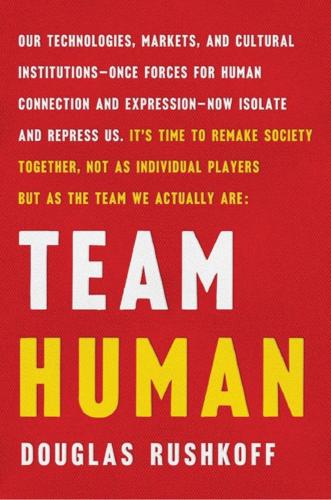
Team Human
by
Douglas Rushkoff
Published 22 Jan 2019
Whenever people are captivated—be they excited or enslaved—by a new technology, it becomes their new role model, too. In the Industrial Age, as mechanical clocks dictated human time and factory machines outpaced human workers, we began to think of ourselves in very mechanical terms. We described ourselves as living in a “clockwork universe,” in which the human body was one of the machines. Our language slowly became invested with mechanical metaphors: we needed to grease the wheels, crank up the business, dig deeper, or turn a company into a well-oiled machine. Even everyday phrases, such as “fueling up” for eating lunch or “he has a screw loose” for thinking illogically, conveyed the acceptance of humans as mechanical devices.
…
Surprisingly, the inability to establish trust in digital environments doesn’t deter us from using them William Softky, “Sensory Metrics of Neuromechanical Trust,” Journal of Neural Computation 29, no. 9 (September 2017). This is how products you may have looked at on one website magically show up as advertisements on the next. Do Not Track, documentary film, directed by Brett Gaylor (2015), available at https://donottrack-doc.com. 37. We described ourselves as living in a “clockwork universe” John of Sacrobosco, De Sphaera Mundi (On the Sphere of the World), c. 1230, available at http://www.esotericarchives.com/solomon/sphere.htm. Dennis Des Chene, Spirits and Clocks: Machine and Organism in Descartes (Ithaca, NY: Cornell University Press, 2000). We sought to operate faster George Lakoff, Metaphors We Live By (Chicago: University of Chicago Press, 1980).
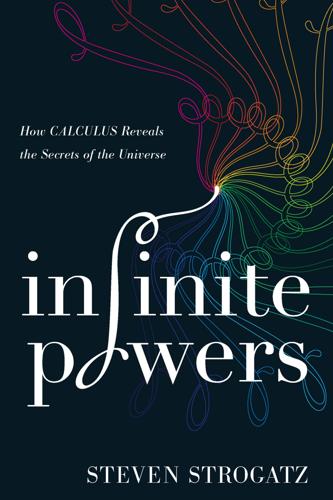
Infinite Powers: How Calculus Reveals the Secrets of the Universe
by
Steven Strogatz
Published 31 Mar 2019
Early in the 1800s, the French mathematician and astronomer Pierre Simon Laplace took the determinism of Newton’s clockwork universe to its logical extreme. He imagined a godlike intellect (now known as Laplace’s demon) that could keep track of all the positions of all the atoms in the universe as well as all the forces acting on them. “If this intellect were also vast enough to submit these data to analysis,” he wrote, “nothing would be uncertain and the future just like the past would be present before its eyes.” As the turn of the twentieth century approached, this extreme formulation of the clockwork universe began to seem scientifically and philosophically untenable, for several different reasons.
…
They raised their glasses in a boisterous toast: “Newton’s health, and confusion to mathematics.” Newton got a warmer reception in philosophy, where his ideas influenced Voltaire, David Hume, John Locke, and other Enlightenment thinkers. They were taken with the power of reason and the explanatory successes of his system, with its clockwork universe driven by causality. His empirical-deductive approach, anchored in facts and fueled by calculus, swept away the a priori metaphysics of earlier philosophers (I’m looking at you, Aristotle). Beyond science, it left its mark on Enlightenment conceptions of everything from determinism and liberty to natural law and human rights.
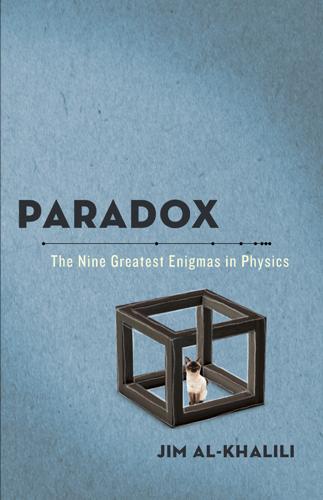
Paradox: The Nine Greatest Enigmas in Physics
by
Jim Al-Khalili
Published 22 Oct 2012
Ours was a universe in which everything—all movement, all change—was predetermined. There was no free choice, no uncertainty, and no chance. This model became known as the Newtonian clockwork universe. At first glance, it is not as bleak as Einstein’s block universe, in which everything that has ever happened and will ever happen in the future is laid out frozen in time before us. But in fact, the clockwork universe is no different in the sense that its state at all future times is predetermined and fixed. Then this view suddenly changed. In 1886 the King of Sweden offered a prize of 2,500 kroner (a tidy sum, more than most Europeans would earn in a year) to whoever could prove (or disprove) the stability of the solar system: that is, say for sure whether the planets would continue to orbit around the Sun forever or if there was a chance that one or more of them might one day spiral into the Sun or escape the pull of its gravity and float away.
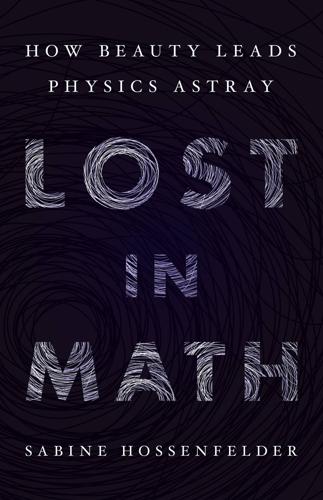
Lost in Math: How Beauty Leads Physics Astray
by
Sabine Hossenfelder
Published 11 Jun 2018
And not only does the history of science thrive with beautiful ideas that turned out to be wrong, but on the flipside we have the ugly ideas that turned out to be correct. Maxwell himself, for example, didn’t like electrodynamics the way he conceived it because he couldn’t come up with an underlying mechanical model. Back then, the standard of beauty was a mechanical clockwork universe, but in Maxwell’s theory electromagnetic fields just are—they are not made of anything else, no gears or notches, no fluids or valves. Maxwell was unhappy about his own theory because he thought that only “when a physical phenomenon can be completely described as a change in the configuration and motion of a material system, the dynamical explanation of that phenomenon is said to be complete.”
…
And then still further over there you have the string theory landscape in which the physics in each of the bubbles is different. And even further you get Tegmark’s mathematical multiverse. And then, far over there, you get people like [Nick] Bostrom saying that we live in a computer simulation. That’s not even pseudoscience, it’s fiction.” I say: “It’s a modern version of the clockwork universe, basically. Then it was gears and bolts, now it’s quantum computers.” “Yes,” George says. “But you see, Brian Greene lists it as a possibility in his book. And when people write things like this as scientific possibilities, I wonder: to what level can you have faith in what they’re thinking?
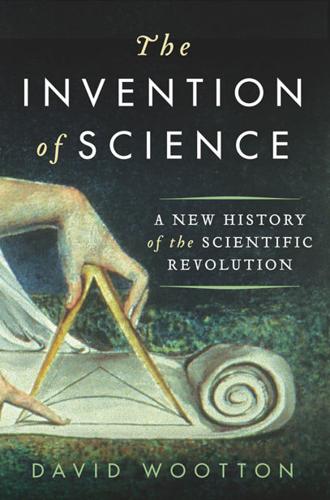
The Invention of Science: A New History of the Scientific Revolution
by
David Wootton
Published 7 Dec 2015
Once Lucretius was available (he was rediscovered in 1417), his concept of the machina mundi could be turned into a quite new idea, the idea of a clockwork universe. In order for this to happen, however, the text of Lucretius was not enough. What was needed was not just new machines but also a new language for discussing machinery. Before this new language, clocks could be used to understand the heavens but not terrestrial physics or biology. It was engineers such as de Caus who, by generalizing the concept of a moving mechanism, made the clockwork universe and the mechanical man possible. Geography had been remade at the beginning of the sixteenth century by mariners; the philosophy of nature was remade in the seventeenth by the ‘mathematicians and engineers’.39 Natural philosophy was no longer an enterprise to be conducted simply with pen and paper.
…
Collingwood’s claim that the Industrial Revolution was ‘well on the way’ by the sixteenth century seems to me misconceived, for no new power sources had been brought to bear, but in Chapter 14 I will argue that it was indeed well under way by the end of the seventeenth century, thanks to the appearance of a new type of expert, the engineer-scientist. § 4 It will now be apparent that Descartes and Boyle both have what we may term mechanical philosophies, but that they are very different. Of the core three arguments we have distinguished – the corpuscular philosophy, animals as automatons and the clockwork universe – they agree on the first, but each picks one and only one of the other two. Animal automata lead to atheism if humans are held to be little different from animals, but not if one can prove (as Descartes thought he could) the existence of an immaterial mind. The corpuscular philosophy leads to atheism if it is combined with the claim that the universe arises from chance, but not if this further step is blocked, as Boyle sought to block it, by the argument from design.
…
Snobelen, Stephen D. ‘ “God of Gods, and Lord of Lords”: The Theology of Isaac Newton’s General Scholium to the Principia’. Osiris 16 (2001): 169–208. ———. ‘Isaac Newton, Heretic: The Strategies of a Nicodemite’. British Journal for the History of Science 32 (1999): 381–419. ———. ‘The Myth of the Clockwork Universe’. In The Persistence of the Sacred in Modern Thought. Ed. CL Firestone and N Jacobs. Notre Dame: University of Notre Dame Press, 2012: 49–184. ———. ‘William Whiston, Isaac Newton and the Crisis of Publicity’. Studies in History and Philosophy of Science Part A 35 (2004): 573–603. Snow, Charles Percy.
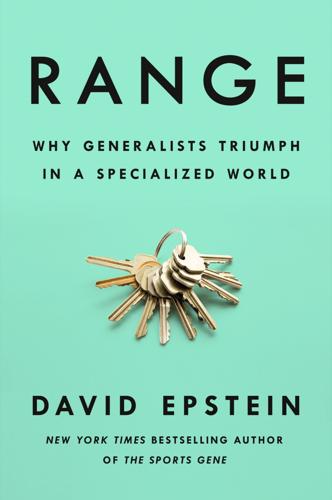
Range: Why Generalists Triumph in a Specialized World
by
David Epstein
Published 1 Mar 2019
Their spirits may have been driving, but the planets also needed a vehicle for motion, so they were assumed to be riding on pure crystalline spheres. The spheres were invisible from Earth and interlocked, like the gears of a clock, to produce collective motion at a constant speed for all eternity. Plato and Aristotle had laid the foundation for the accepted model, and it dominated for two thousand years. That clockwork universe was the one German astronomer Johannes Kepler inherited. He accepted it, at first. When the constellation Cassiopeia suddenly gained a new star (it was actually a supernova, the bright explosion at the end of a star’s life), Kepler recognized that the idea of the unchanging heavens could not be correct.
…
The assignment no one wanted became Kepler’s keyhole view into a new understanding of the universe. He was in uncharted territory. The analogies began in earnest, and he reinvented astronomy. Light, heat, smells, boats, brooms, magnets—it began with those pesky observations that didn’t quite fit, and ended in the complete undoing of Aristotle’s clockwork universe. Kepler did something that turns out to be characteristic of today’s world-class research labs. Psychologist Kevin Dunbar began documenting how productive labs work in the 1990s, and stumbled upon a modern version of Keplerian thinking. Faced with an unexpected finding, rather than assuming the current theory is correct and that an observation must be off, the unexpected became an opportunity to venture somewhere new—and analogies served as the wilderness guide.
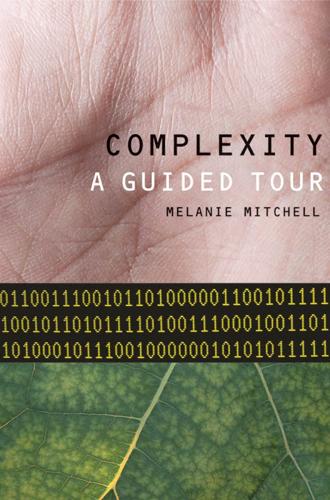
Complexity: A Guided Tour
by
Melanie Mitchell
Published 31 Mar 2009
Newton’s insight—now the backbone of modern science—was that this law applies everywhere in the universe, to falling apples as well as to planets. As he wrote: “nature is exceedingly simple and conformable to herself. Whatever reasoning holds for greater motions, should hold for lesser ones as well.” Newtonian mechanics produced a picture of a “clockwork universe,” one that is wound up with the three laws and then runs its mechanical course. The mathematician Pierre Simon Laplace saw the implication of this clockwork view for prediction: in 1814 he asserted that, given Newton’s laws and the current position and velocity of every particle in the universe, it was possible, in principle, to predict everything for all time.
…
See cellular automata calculus, 18, 301–302 of complexity, 301–303 Calvino, Italo, 225 Carnot, Sadi, 302 Carroll, Sean, 278 carrying capacity, 25, 27 cascading failure, 255–258 C. elegans, 158, 238, 247 cellular automata architecture of 146–148 classes of behavior in, 155–156 computation in, 157–158, 161, 164–168, 171–172, 303 elementary, 152–153 (see also rule 110 cellular automaton; rule 30 cellular automaton) as evolved by genetic algorithms, 161–164 as idealized models of complex systems, 148–149, 211 information processing in, 157–158, 161, 164–168, 171–172, 303 as models for the universe, 158–159 numbering of, 153–154 particles in, 166–168, 171–172 as pseudo-random number generators, 155 rules, 147–149 space-time diagrams of, 153–155, 162, 164–165, 167 as substrate for self-reproducing automata, 149 as universal computers, 149–151, 156 central processing unit (CPU), 145–146, 160–161 chaos, 20–22, 28, 31–39, 211, 273, 284, 293, 300 edge of, 284–285 in the logistic map, 31–33 onset of, 35–36 period-doubling route to, 34–35 in random Boolean Networks, 284–285 revolutionary ideas from, 38 universal properties of, 34–38, 294 characteristic scale (of a distribution), 243–244 chromosomes, 88–89, 96, 274–275 citric acid cycle, 179 classical mechanics, 19, 48 Clausius, Rudolph, 47, 51 clockwork universe, 19, 33 clustering (in networks), 235–236, 238–240, 245, 252, 255 coarse graining, 101, 183 codons, 90–92 coevolution of Web and search engines, 10 Cohen, Irun, 40 colonial organisms, 110 complex adaptive systems distinction from complex systems, 13 See also complexity complexity (or complex systems) as algorithmic information content, 98–99 “calculus” of, 301–303 central question of sciences of, 13 common properties of, 294–295 as computational capacity, 102 definitions of, 13, 94–111 as degree of hierarchy, 109–111 effective, 98–100 in elementary cellular automata, 155 as entropy, 96–98 as fractal dimension, 102–109 future of, 301–303 Horgan’s article on, 291–292 Latin root, 4 as logical depth, 100–101 measurement of, 13, 94–111 problems with term, 95, 299, 301 roots of sciences of, 295–298 science of versus sciences of, 14, 95 significance of in science, 300 as size, 96 source of biological, 233, 248–249, 273–288 statistical, 102–103 as thermodynamic depth, 101–102 as a threat, 257 unified theories of, 293, 299 universal computation as upper limit on, 157 universal principles for, 299 vocabulary for, 293, 298, 301–303 complex systems.
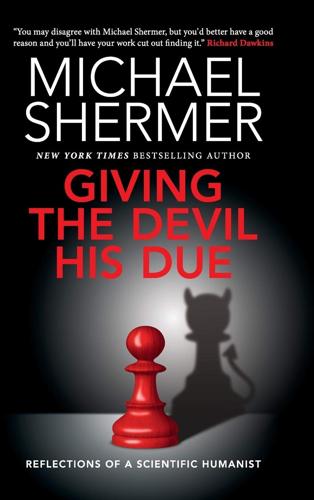
Giving the Devil His Due: Reflections of a Scientific Humanist
by
Michael Shermer
Published 8 Apr 2020
Although the rise of science was not the only variable at work in the decline of the witch craze, in Religion and the Decline of Magic the historian Keith Thomas concludes that the first and most important factor “was the series of intellectual changes which constituted the scientific and philosophical revolution of the seventeenth century. These changes had a decisive influence upon the thinking of the intellectual élite and in due course percolated down to influence the thought and behavior of the people at large. The essence of the revolution was the triumph of the mechanical philosophy.” By this Thomas means the Newtonian clockwork universe, the worldview that holds that all effects have natural causes and the universe is governed by natural laws that can be examined and understood. In this worldview there is no place for the supernatural, and that is what ultimately doomed the witch theory of causality, as it did other supernatural explanations for natural occurrences.
…
L., 201 Menon, Latha, 287 Merckx, Eddy, 286 Merkel, Angela, 2 methodological naturalism, 224 #metoo movement, 132 Meyer, Stephen, 55, 57–59 microaggressions, 68–70 Miele, Frank, 21 Mill, John Stuart, 92, 136, 139, 231On Liberty, 4 Millennials, 65 Miller, Geoffrey, 209–210 Mill’s Maxim, 4 Milton, John Areopagitica, 3–4 Min Yongjun, 166 Miscavige, David, 93 Miscavige, Ron, 93 Miscavige Hill, Jenna, 93 Mlodinow, Leonard, 124–125 Montesquieu, 230 moral progress, 71–72 moral realism Is-Ought fallacy, 236–242 moral values common ground, 142–143 morality atheism and, 87–88 Divine Command Theory, 231–232 getting from is to ought, 228–235 moralization gap, 35 More, Sir Thomas, 8–9, 22 Morgan, Kathryn Pauly, 131 Mormons, 315 Moss, Thelma, 271 multiple creations cosmology, 122 murder individual homicides statistics, 163–165 Musk, Elon, 145, 146–147, 148, 149 National Firearms Act (1934), 191 National Mental Health hotline proposal, 170–171 natural selection (Darwin), 204–205 naturalistic fallacy, 103, 228–235 Navarick, Doug, 271 Nawaz, Maajid, 75 Nazism, 31social Darwinism, 60–61 Nelson, Paul, 55 neo-Darwinism, 62 Network (film), 88 New Atheist movement, 86, 289 New York Times, 177 Newtonian clockwork universe, 223 nihilism, 269 9/11, 23, 34, 41, 78, 89, 192, 245, 251, 278, 280 nonoverlapping magisteria (NOMA), 294 nonskeptical realism, 306 Norberg, Johan, 130 Norway Breivik killings, 29 nothing as something, 113 explanations for, 113–120 God created the universe out of (ex nihilo), 115–117 inconceivable nature of, 113 would include God’s nonexistence, 113–115 NRA, 162 See also gun control Nurturant Parent metaphor for the nation as a family, 193–197 Obama, Barack, 162, 253, 258–259 Objectivism, 134 Oklahoma City bombing (1995), 30 Old-Earth Creationists, 51 On Liberty (Mill), 4 ontological argument for the existence of God, 114 ontological realism, 306 Oppenheimer, J.
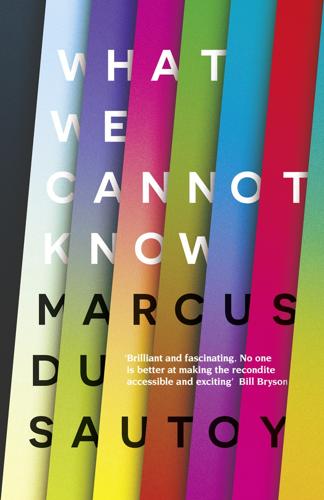
What We Cannot Know: Explorations at the Edge of Knowledge
by
Marcus Du Sautoy
Published 18 May 2016
And yet I can hardly blame him for uncovering one of the most devastating blows for anyone wanting to know what’s going to happen next. He was hardly very thrilled himself with the discovery, given that it cost him rather a lot of money. Born a hundred years after Laplace, Poincaré believed, like his compatriot, in a clockwork universe, a universe governed by mathematical laws and utterly predictable. ‘If we know exactly the laws of nature and the situation of the universe at the initial moment, we can predict exactly the situation of the same universe at a succeeding moment.’ Understanding the world was Poincaré’s prime motivation for doing mathematics.
…
At least with the dice I have the impression that I could know the outcome given enough data. However, there seems to be no way of determining when the uranium will emit an alpha particle. Complete information doesn’t make any difference. According to the current model of quantum physics, it’s completely and genuinely random. It is a counterexample to Laplace’s belief in a clockwork universe. For someone on the search for certainty and knowledge the revelations of quantum physics are extremely unsettling. There is nothing I can do to know when that pot on my desk is going to emit its next alpha particle? That’s deeply shocking. Is there really no way I can know? There is much debate about whether this is truly something random, something we can never know, or whether there is a hidden mechanism we have yet to uncover that would explain the moment that radiation occurs.

Animal Spirits: The American Pursuit of Vitality From Camp Meeting to Wall Street
by
Jackson Lears
This belief emphasized the importance of human will in promoting progress toward the millennium; it reinforced an ethic of mastery that underwrote secular ideologies of success. Dwight combined his millennial expectations with a cosmology derived from the natural philosophy of the English minister William Paley—a clockwork universe, set in motion by a watchmaker God. Paley’s clockwork universe was thoroughly deanimated, devoid of mysterious signs and miraculous events, ultimately subject to human understanding through observation and measurement. Dwight, like other evangelical rationalists, wedded Paleyite cosmology to Protestant Christianity—unwittingly creating common ground between himself and men like Ethan Allan and Thomas Paine, the freethinkers and deists he despised.
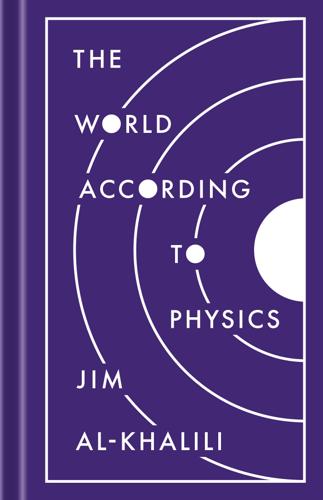
The World According to Physics
by
Jim Al-Khalili
Published 10 Mar 2020
But what about quantum mechanics? Isn’t that where true randomness and indeterminism enter at a fundamental level? Does quantum mechanics not rescue us from the bleak determinism of a preordained, fixed future in which we feel we are no longer making free choices but are just cogs in an orderly clockwork universe? The truth is, we have no clear answer to this question yet. We must also take care to distinguish unpredictability from indeterminism. It is quite true that the probabilistic nature of the quantum world means that events are unpredictable: that we cannot know in advance exactly where an electron will be, or in which direction it is spinning, or precisely when a radioactive atom will decay.

They Have a Word for It A Lighthearted Lexicon of Untranslatable Words & Phrases-Sarabande Books (2000)
by
Howard Rheingold
Published 10 Mar 2020
Hall mentions the fact that we learn to use these experience-fragmenting tools but are not taught their integrative complements (that some things cannot be analyzed; that some things cannot be strictly understood as physical phenomena; that private events can and should be studied systematically). One fundamental distinction that is built into English grammar is the difference between an object and a process. This distinction fits neatly with Newton's model of a clockwork universe. Unfortunately for those who were stuck in Newton- States of Mind 139 ian thought-modes, the quantum physicists showed that the world is more like a web of inextricably interconnected processes than a series of discrete events. In the West, we are just beginning to adjust our states of mind to the worldviews uncovered by the quantum revolution.

Before Babylon, Beyond Bitcoin: From Money That We Understand to Money That Understands Us (Perspectives)
by
David Birch
Published 14 Jun 2017
Looking for narrative At the heart of this narrative there are two relationships: that between the technology of money and wider technological evolution, and that between the technology of money and the way that society thinks about money. To use a famous illustration of this, scientists would have found it hard to imagine a clockwork universe if they hadn’t first seen a clock. You can’t invent coins unless someone has already invented smelting, you can’t invent banknotes without printing, you can’t have Western Union without the telegraph, and so, rather obviously, on. But what is the technology of the present that will helps us to think about the money of the future?
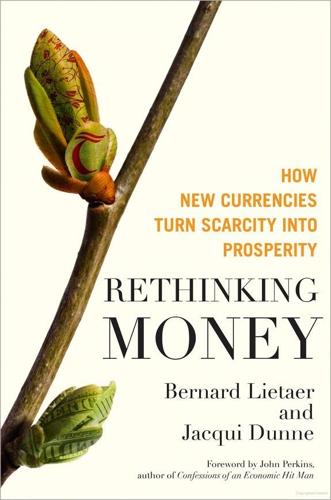
Rethinking Money: How New Currencies Turn Scarcity Into Prosperity
by
Bernard Lietaer
and
Jacqui Dunne
Published 4 Feb 2013
Rethinking Money 217 As we have seen, our current beliefs and practices about money, deliberated by high priests in the temples of central banks, were extrapolated from a series of economic assumptions based on the faulty and incomplete understanding of physics that prevailed at the end of the 19th century. They reflect the limited Newtonian view of a clockwork universe, static and immutable, rather than the more dynamic, complex, highly interdependent, and unpredictable universe of Bohr and the modern school of nonlinear dynamics. Policy making, whether in business or in politics, based on forecasts distorted by the conventional money system is at best shortsighted, if not outright erroneous.
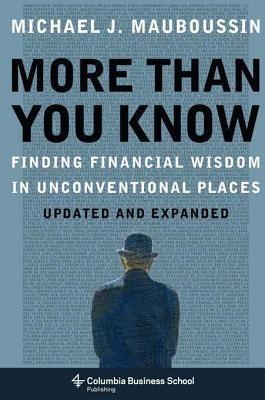
More Than You Know: Finding Financial Wisdom in Unconventional Places (Updated and Expanded)
by
Michael J. Mauboussin
Published 1 Jan 2006
Investors who insist on understanding the causes for the market’s moves risk focusing on faulty causality or inappropriately anchoring on false explanations. Many of the big moves in the market are not easy to explain. Laplace’s Demon Two hundred years ago, determinism ruled in science. Inspired by Newton, scientists largely embraced the notion of a clockwork universe. The French mathematician Pierre Simon Laplace epitomized this thinking with a famous passage from A Philosophical Essay on Probabilities:An intellect which at any given moment knew all of the forces that animate Nature and the mutual positions of the beings that comprise it, if this intellect were vast enough to submit its data to analysis, could condense into a single formula the movement of the greatest bodies of the universe and that of the lightest atom: for such an intellect nothing could be uncertain; and the future just like the past would be present before its eyes.
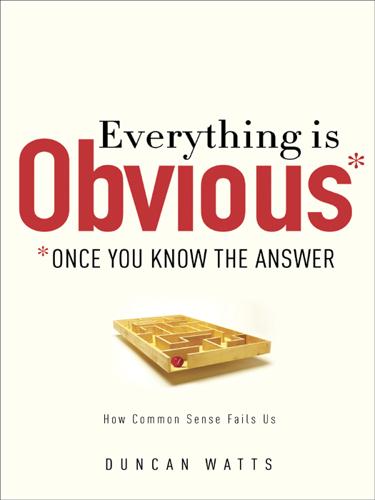
Everything Is Obvious: *Once You Know the Answer
by
Duncan J. Watts
Published 28 Mar 2011
For philosophers, the demon was controversial because in reducing the prediction of the future to a mechanical exercise, it seemed to rob humanity of free will. As it turned out, though, they needn’t have worried too much. Starting with the second law of thermodynamics, and continuing through quantum mechanics and finally chaos theory, Laplace’s idea of a clockwork universe—and with it the concerns about free will—has been receding for more than century now. But that doesn’t mean the demon has gone away. In spite of the controversy over free will, there was something incredibly appealing about the notion that the laws of nature, applied to the appropriate data, could be used to predict the future.
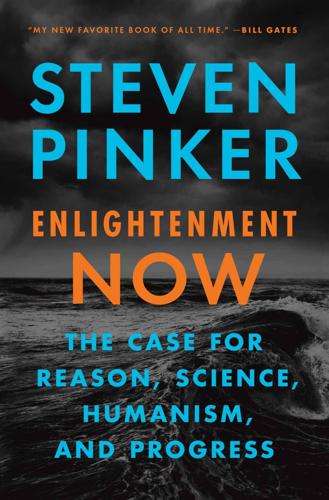
Enlightenment Now: The Case for Reason, Science, Humanism, and Progress
by
Steven Pinker
Published 13 Feb 2018
Failing that, one points to sadistic gods, who cannot be punished but can be placated with prayers and sacrifices. And then there are disembodied forces like karma, fate, spiritual messages, cosmic justice, and other guarantors of the intuition that “everything happens for a reason.” Galileo, Newton, and Laplace replaced this cosmic morality play with a clockwork universe in which events are caused by conditions in the present, not goals for the future.20 People have goals, of course, but projecting goals onto the workings of nature is an illusion. Things can happen without anyone taking into account their effects on human happiness. This insight of the Scientific Revolution and the Enlightenment was deepened by the discovery of entropy.
…
The cognitive niche: Marlowe 2010; Pinker 1997/2009; Tooby & DeVore 1987; Wrangham 2009. 15. Language: Pinker 1994/2007. 16. Hadza menu: Marlowe 2010. 17. Axial Age: Goldstein 2013. 18. Explaining the Axial Age: Baumard et al. 2015. 19. From The Threepenny Opera, act II, scene 1. 20. Clockwork universe: Carroll 2016; Wootton 2015. 21. Innate illiteracy and innumeracy: Carey 2009; Wolf 2007. 22. Magical thinking, essences, word magic: Oesterdiekhoff 2015; Pinker 1997/2009, chaps. 5 and 6; Pinker 2007a, chap. 7. 23. Bugs in statistical reasoning: Ariely 2010; Gigerenzer 2015; Kahneman 2011; Pinker 1997/2009, chap. 5; Sutherland 1992. 24.
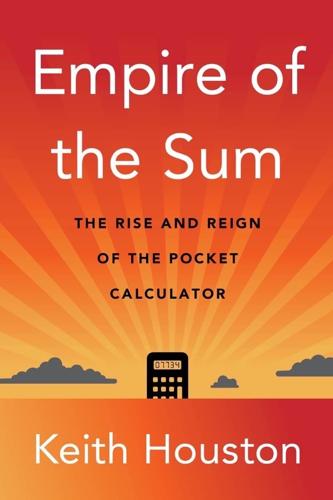
Empire of the Sum: The Rise and Reign of the Pocket Calculator
by
Keith Houston
Published 22 Aug 2023
Woodcroft, The Pneumatics of Hero of Alexandria: From the Original Greek (London: Taylor, Walton and Maberly, 1851), 72; G. Nadarajan, “Islamic Automation: A Reading of Al-Jazari’s The Book of Knowledge of Ingenious Mechanical Devices (1206),” 2007. 5 Silvio A. Bedini, “The Role of Automata in the History of Technology,” Technology and Culture 5, no. 1 (1964): 31–32. 6 Alan J. Friedman, “The Clockwork Universe,” Technology and Culture 25, no. 2 (1984): 284; Bedini, “The Role of Automata,” 32. 7 D. Masson et al., Macmillan’s Magazine, vol. 10, English Literary Periodicals (London: Macmillan and Company, 1864), 438. 8 Thomas Hockey et al., eds., “Schickard, Wilhelm,” The Biographical Encyclopedia of Astronomers (New York: Springer, 2007), https://doi.org/10.1007/978-0-387-30400-7_1233; J.
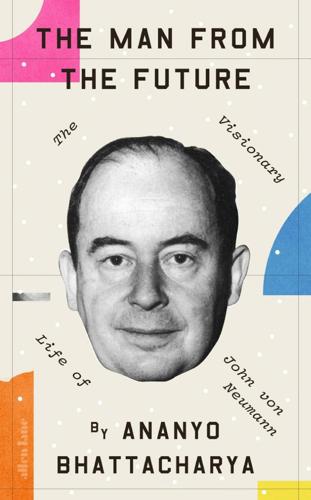
The Man From the Future: The Visionary Life of John Von Neumann
by
Ananyo Bhattacharya
Published 6 Oct 2021
Also in Göttingen at that time there was another boy wonder, the twenty-three-year-old Werner Heisenberg, who was laying the groundwork for a successful – but bewildering – new science of the atom and its constituents, which was soon christened ‘quantum mechanics’. The theory would explain many odd experimental results from preceding decades but threatened to overturn cherished ideas scientists had held about the nature of reality for hundreds of years. Quantum mechanics opened a rift between cause and effect, banishing the Newtonian clockwork universe, where tick had reliably followed tock. Beginning in 1900, when German physicist Max Planck reluctantly introduced the radical idea that energy might be absorbed or emitted in lumps, or ‘quanta’, discoveries that had seemed at first trivial would challenge, then revolutionize, physics just as Russell’s paradoxes were shaking the foundations of mathematics.
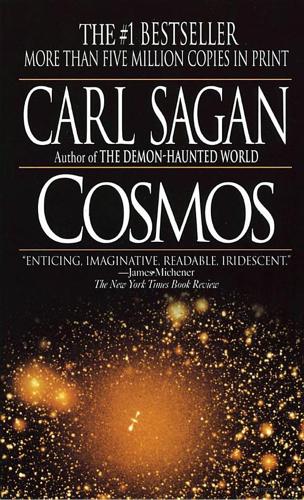
Cosmos
by
Carl Sagan
Published 1 Jan 1980
He envisioned Tycho’s domain as a refuge from the evils of the time, as the place where his Cosmic Mystery would be confirmed. He aspired to become a colleague of the great Tycho Brahe, who for thirty-five years had devoted himself, before the invention of the telescope, to the measurement of a clockwork universe, ordered and precise. Kepler’s expectations were to be unfulfilled. Tycho himself was a flamboyant figure, festooned with a golden nose, the original having been lost in a student duel fought over who was the superior mathematician. Around him was a raucous entourage of assistants, sycophants, distant relatives and assorted hangers-on.
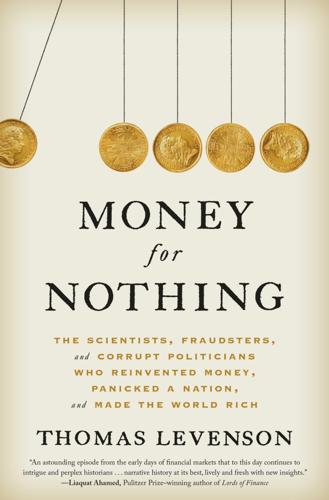
Money for Nothing
by
Thomas Levenson
Published 18 Aug 2020
“Credit,” he wrote, “is not the Effect of this or that Wheel in the Government, moving regular and just to its proper work”—no one person governs the process, and the nation’s borrowing does not depend on the integrity or intelligence of a single minister. Rather, Britain’s capacity to borrow more or less at will turns on “the whole Movement, acting by the Force of its true original Motion.” None of his readers would miss the reference to Newton’s clockwork universe, nature moving in strict order, governed by fundamental laws that produced sure and certain outcomes each succeeding hour. Defoe’s theory wasn’t as precise as Newton’s. He wrote that it was “the Honor, the Probity, the exact punctual Management” of Britain’s finances—the commitment to deliver each succeeding year what was promised to those who supplied it with credit—that drove both “the Great Wheel in the Nation’s Clockwork” and “the Great Spring that turn’d about that Wheel.”

Power, Sex, Suicide: Mitochondria and the Meaning of Life
by
Nick Lane
Published 14 Oct 2005
Either way, our universe apparently kindles life. Some thinkers go even further, and see the eventual evolution of humanity, and in particular of human consciousness, as an inevitable outcome of the universal laws, which is to say the precise weightings of the fundamental constants of physics. This amounts to a modern version of the clockwork universe of Leibniz and Newton, parodied by Voltaire as ‘All is for the best in the best of all possible worlds.’ Some physicists and cosmologists with a leaning towards biology find a spiritual grandeur in this view of the universe as the midwife of intelligence. Such insights into the innermost workings of nature are celebrated as a ‘window’ into the mind of God.
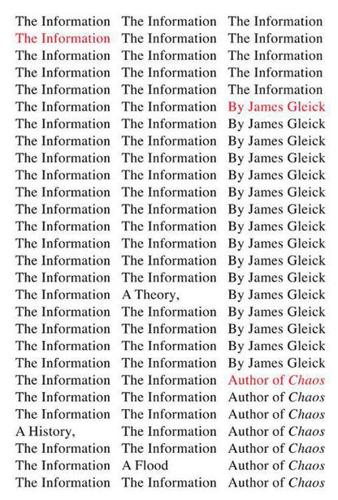
The Information: A History, a Theory, a Flood
by
James Gleick
Published 1 Mar 2011
“A being of infinite understanding,” wrote Poe, “—one to whom the perfection of the algebraic analysis lay unfolded” could trace the undulations backward to their source. Babbage and Poe took an information-theoretic view of the new physics. Laplace had expounded a perfect Newtonian mechanical determinism; he went further than Newton himself, arguing for a clockwork universe in which nothing is left to chance. Since the laws of physics apply equally to the heavenly bodies and the tiniest particles, and since they operate with perfect reliability, then surely (said Laplace) the state of the universe at every instant follows inexorably from the past and must lead just as relentlessly to the future.
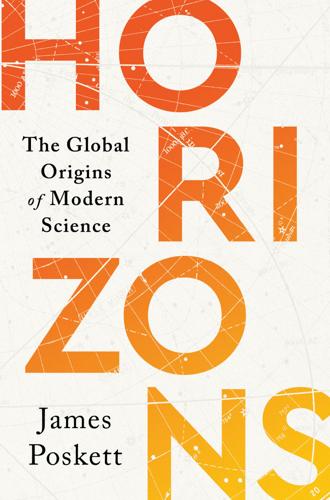
Horizons: The Global Origins of Modern Science
by
James Poskett
Published 22 Mar 2022
In fact, he was starting to think that the universe itself might be rather like a giant clock. (The same idea proved incredibly influential in Europe, particularly during the seventeenth century when it was taken up by René Descartes.) In a work that mixed theology, philosophy, and mathematics, Taqi al-Din set out his vision of a clockwork universe. He explained that he hoped ‘to build a machine and a clock that would reflect the spiritual structure of the heavens’. Indeed, the Istanbul observatory featured just such a machine. In another one of the Persian miniatures we see an enormous spherical device, made of metal, supported by a wooden frame.
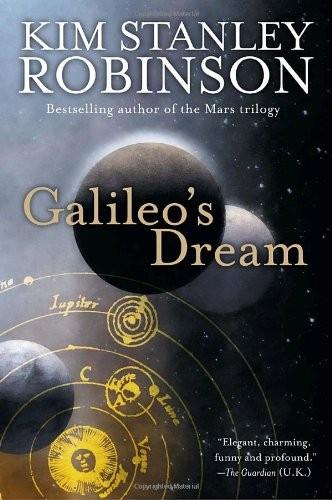
Galileo's Dream
by
Kim Stanley Robinson
Published 29 Dec 2009
That’s when you have Laplace declaring that with a sufficient physics and database you could predict the entire past and future of the universe just by entering the numbers for the current moment, and running them through the equations either forward or back, as in an astrolabe. It was a thought experiment only, because no one would ever have the data set to do it. But the implication was that God, or something like it, could do it.” “Yes. I can see that.” “It implied a predetermined, clockwork universe that many found depressing to contemplate. We weren’t really choosing to do anything.” “Yes. But your quantum mechanics destroyed all that.” “Precisely.” “Or imprecisely.” “Ha, yes. With relativity and quantum mechanics we began to understand that the four dimensions we sense are artifacts of our perception of dimensions far more numerous than we knew.
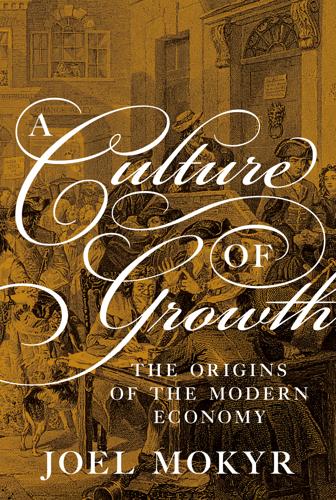
A Culture of Growth: The Origins of the Modern Economy
by
Joel Mokyr
Published 8 Jan 2016
“Size and Dynastic Decline: The Principal-Agent Problem in Late Imperial China 1700-1850.” Explorations in Economic History, Vol. 54, pp. 107–27. Snobelen, Stephen D. 1999. “Isaac Newton, Heretic: the Strategies of a Nicodemite.” British Journal for the History of Science Vol. 32, pp. 381–419. ———. 2012. “The Myth of the Clockwork Universe: Newton, Newtonianism, and the Enlightenment.” In Chris L. Firestone and Nathan Jacobs, eds. The Persistence of the Sacred in Modern Thought. Notre Dame, IN: University of Notre Dame Press, pp. 149–84. Song, Yingxing [Sung, Ying-Hsing]. [1637] 1966. T’ien-Kung K’ai-Wu [Tiangong Kaiwu]: Chinese Technology in the Seventeenth Century.
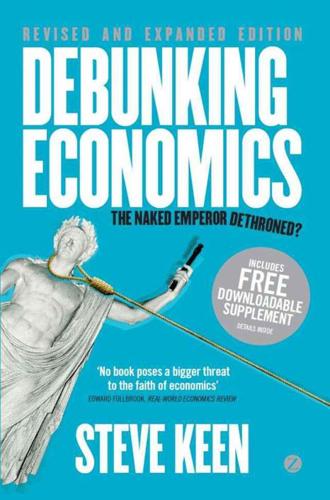
Debunking Economics - Revised, Expanded and Integrated Edition: The Naked Emperor Dethroned?
by
Steve Keen
Published 21 Sep 2011
As a result, in place of Laplace’s grand conceit, there is a humility to modern mathematics. The future cannot be known, mathematics cannot solve every problem, some things may not be knowable. TABLE 16.1 The solvability of mathematical models (adapted from Costanza 1993) But these epiphanies passed economists by: they continue to believe in a clockwork universe, in which a proper specification of the conditions of today could enable you to predict the future for all time. Nowhere is this vanity more obvious than in the school’s defining works, Walras’s Elements of Pure Economics and Debreu’s Theory of Value. Walras’s arrogance towards those economists who would not practice mathematics is still the typical attitude today held by economists towards those who criticize their use of mathematics: As for those economists who do not know any mathematics, who do not even know what is meant by mathematics and yet have taken the stand that mathematics cannot possibly serve to elucidate economic principles, let them go their way repeating that ‘human liberty will never allow itself to be cast into equations’ or that ‘mathematics ignores frictions which are everything in social science’ and other equally forceful and flowery phrases.
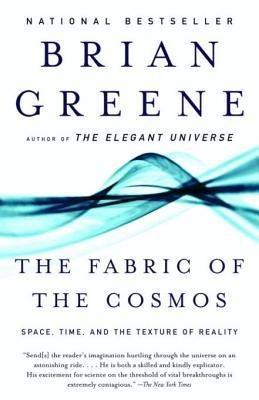
The Fabric of the Cosmos
by
Brian Greene
Published 1 Jan 2003
To Aristotle, the universe was a collection of fifty-five concentric crystalline spheres, the outermost being heaven, surrounding those of the planets, earth and its elements, and finally the seven circles of hell.1 With Newton and his precise, deterministic mathematical formulation of motion, the description changed again. The universe was likened to an enormous, grand clockwork: after being wound and set into its initial state, the clockwork universe ticks from one moment to the next with complete regularity and predictability. Special and general relativity pointed out important subtleties of the clockwork metaphor: there is no single, preferred, universal clock; there is no consensus on what constitutes a moment, what constitutes a now.